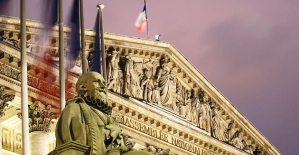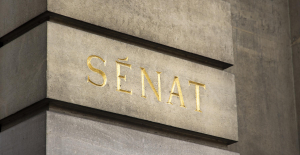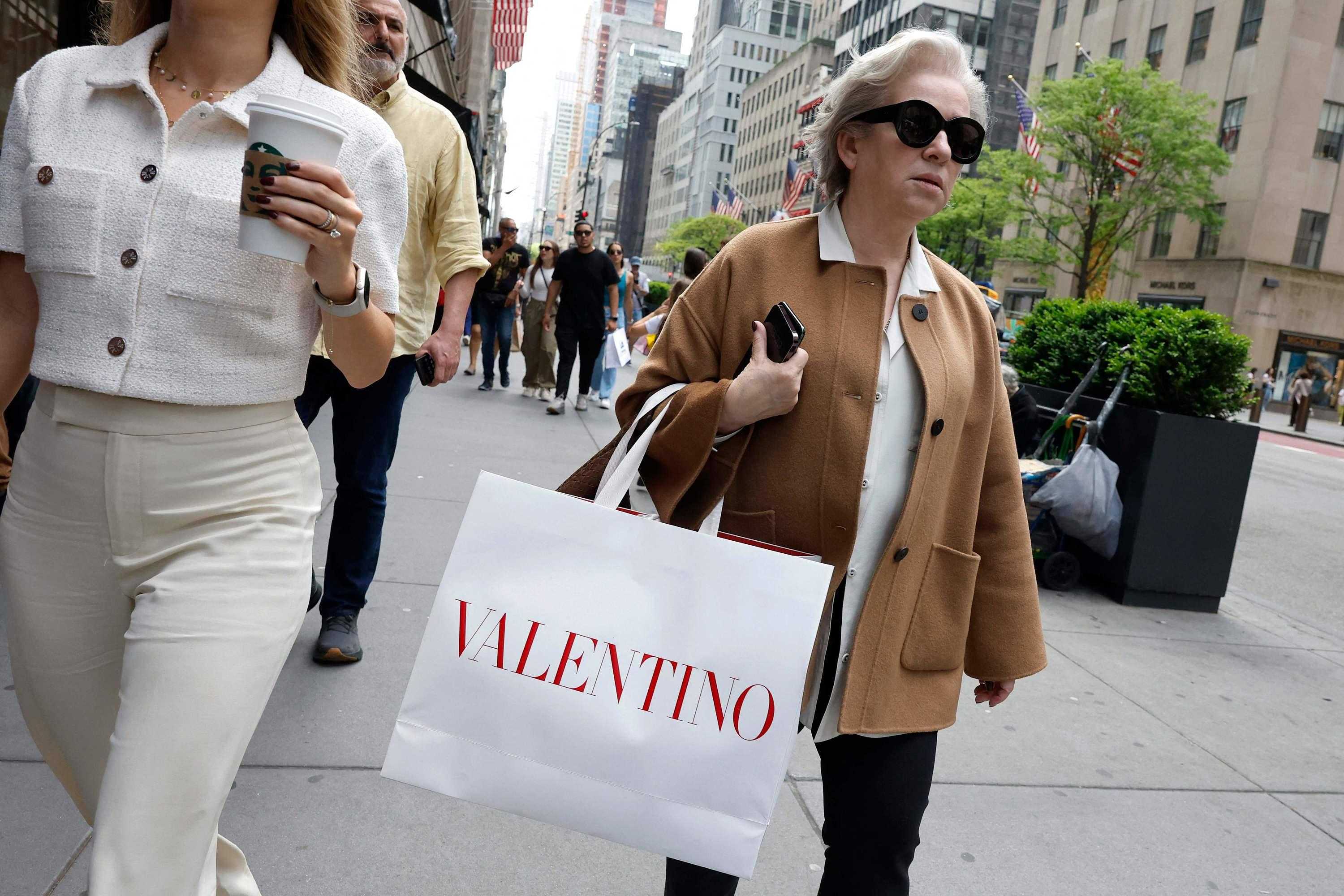He admits it: “To rub shoulders with all these big names of the young classical scene, for me who doesn’t even have a conservatory diploma for my instrument, it’s intimidating!” At 27, Grégoire Blanc is a UFO on the French music scene. This former engineer from Arts et Métiers, endowed with solid training as a cellist, embarked on a crazy project three years ago: to make a career with the instrument he had fallen in love with a few years earlier.
"One of those that we put too easily in the category 'cabinet of curiosities', but which offers a potential for expression and a unique poetic dimension", he assures. Instrument whose colors he defends again this year at the Les Étoiles du Classique festival in Saint-Germain-en-Laye. And more particularly during its opening concert called “The Mystery Box”: the theremin.
"It's true that with its intriguing look, this instrument, which dates back to 1919 but has never stopped evolving since, going from tube to transistors, even digital, has everything of a mystery box", s amused the young man behind his Roaring Twenties mustache.
Presented in the form of an electronic box extended by two antennas, to which it is enough to approach the hands to change as if by magic the frequency and the volume of the sound produced, "it is the only musical instrument which integrates into this not the human body as given by its invoice, he continues. The interpreter acts as an electrode. Which in addition to the unreal sound it emits makes it hyperexpressive. It is no coincidence that most of its performers were cellists or violinists by training... Unlike the synthesizer, which is only a machine that is programmed to trigger sound events, there, the man is here the extension of the instrument.” An expressive dimension that fascinates the public.
And challenges at a time when the debate on artificial intelligence is raging. "When I started to take an interest in the history of this instrument, on the sidelines of a physics course in high school, I was struck to see that at the time when Léon Thérémine, its inventor, was making its tours around the world to present it, the press looked at this instrument of the future with circumspection. Already worrying that machines could replace humans in the artistic and musical field. We know today that this was not the case, but we find many similarities with the discussions we have around AI today.
Hence the need to continue to defend this instrument, “which, like the arpeggione, came close to extinction. Twenty or thirty years ago, there were only two performers left in the world. And while there are a handful of manufacturers like Moog left in the United States, there isn't a class anywhere to teach it." He himself was able to perfect his self-taught knowledge with the Berliner Carolina Eyck, for a long time one of the only ambassadors of the theremin, for whom Régis Campo composed one of the rare original works for theremin and orchestra five years ago.
Because “the big black point of the theremin remains the repertoire. The Martenot waves have taken everything! Probably because as the latter have a keyboard, they offer composers a more reassuring benchmark.” Injustice with which Grégoire Blanc composes by offering his own transcriptions of the great repertoire (drawn in particular from opera). And that he hopes to repair by giving the instrument as much visibility as possible. Including in the context of classic events “open and benevolent enough to welcome us.”
Like the Stars of the classic. Created last year, in the midst of the post-Covid period, by violinist Thomas Lefort with the desire to "give young musicians a voice", the event welcomes each summer, in the castle park and in different places of the city, no less than 200 young classical virtuosos! Many are already part, like Thomas, of the well-identified stars of the new generation. From the Moreau family to violinist and composer Élise Bertrand.
Passing by the cellist Anastasia Kobekina. Others still on the rise. Like the soprano Apolline Raï-Westphal, discovered in Gluck's Armide this winter at the Opéra Comique, and who will be one of the star guests at the closing concert of the event, this Sunday, in the presence of the sponsors, Jean-Claude Casadesus and Karine Deshayes.
The stars of the classic: from June 29 to July 2, in Saint-Germain-en-Laye (Yvelines). www.lesetoilesduclassique.fr

 Gaza: under the spotlight, the Israeli-Palestinian conflict shakes up the Eurovision contest
Gaza: under the spotlight, the Israeli-Palestinian conflict shakes up the Eurovision contest Black soldier killed by a police officer in the United States: the sheriff publishes the video of the arrest
Black soldier killed by a police officer in the United States: the sheriff publishes the video of the arrest In Malmö, the Eurovision party transformed into entrenched camps
In Malmö, the Eurovision party transformed into entrenched camps In Russia, Vladimir Putin stigmatizes “Western elites”
In Russia, Vladimir Putin stigmatizes “Western elites” “Mediterranean diet” or “DASH”, two good tips for eating better
“Mediterranean diet” or “DASH”, two good tips for eating better Fatal case of cholera in Mayotte: the epidemic is “contained”, assures the government
Fatal case of cholera in Mayotte: the epidemic is “contained”, assures the government The presence of blood in the urine, a warning sign of bladder cancer
The presence of blood in the urine, a warning sign of bladder cancer A baby whose mother smoked during pregnancy will age more quickly
A baby whose mother smoked during pregnancy will age more quickly Artificial intelligence lies, cheats and deceives us, and that's a problem, experts warn
Artificial intelligence lies, cheats and deceives us, and that's a problem, experts warn Google Cloud mistakenly deletes UniSuper fund account and deprives 600,000 Australians of their superannuation
Google Cloud mistakenly deletes UniSuper fund account and deprives 600,000 Australians of their superannuation IBM, Amazon, Hager... These record investments expected at the Choose France summit
IBM, Amazon, Hager... These record investments expected at the Choose France summit Boeing's black streak: a second Air France flight diverted in three days for “a smell of heat”
Boeing's black streak: a second Air France flight diverted in three days for “a smell of heat” Eurovision 2024: Bernard-Henri Lévy will vote for the “courageous” Eden Golan in the face of “the wind of hatred against the Jews”
Eurovision 2024: Bernard-Henri Lévy will vote for the “courageous” Eden Golan in the face of “the wind of hatred against the Jews” Eurovision 2024: Joost Klein, the Dutch candidate, excluded from the competition
Eurovision 2024: Joost Klein, the Dutch candidate, excluded from the competition The origin of the vandalized world, the Musée d’Orsay files a complaint
The origin of the vandalized world, the Musée d’Orsay files a complaint London: two octogenarians charged after damaging the “Magna Carta” window
London: two octogenarians charged after damaging the “Magna Carta” window Omoda 7, another Chinese car that could be manufactured in Spain
Omoda 7, another Chinese car that could be manufactured in Spain BYD chooses CA Auto Bank as financial partner in Spain
BYD chooses CA Auto Bank as financial partner in Spain Tesla and Baidu sign key agreement to boost development of autonomous driving
Tesla and Baidu sign key agreement to boost development of autonomous driving Skoda Kodiaq 2024: a 'beast' plug-in hybrid SUV
Skoda Kodiaq 2024: a 'beast' plug-in hybrid SUV The home mortgage firm rises 3.8% in February and the average interest moderates to 3.33%
The home mortgage firm rises 3.8% in February and the average interest moderates to 3.33% This is how housing prices have changed in Spain in the last decade
This is how housing prices have changed in Spain in the last decade The home mortgage firm drops 10% in January and interest soars to 3.46%
The home mortgage firm drops 10% in January and interest soars to 3.46% The jewel of the Rocío de Nagüeles urbanization: a dream villa in Marbella
The jewel of the Rocío de Nagüeles urbanization: a dream villa in Marbella Diving into the secrets of the National Assembly
Diving into the secrets of the National Assembly Institutions: senators want to restore the accumulation of mandates and put an end to the automatic presence of ex-presidents on the Constitutional Council
Institutions: senators want to restore the accumulation of mandates and put an end to the automatic presence of ex-presidents on the Constitutional Council Europeans: David Lisnard expresses his “essential and vital” support for François-Xavier Bellamy
Europeans: David Lisnard expresses his “essential and vital” support for François-Xavier Bellamy Facing Jordan Bardella, the popularity match turns to Gabriel Attal’s advantage
Facing Jordan Bardella, the popularity match turns to Gabriel Attal’s advantage These French cities that will boycott the World Cup in Qatar
These French cities that will boycott the World Cup in Qatar Tennis: Gauff qualified for the round of 16 in pain in Rome
Tennis: Gauff qualified for the round of 16 in pain in Rome WEC: Porsche double at the Six Hours of Spa after an eventful race
WEC: Porsche double at the Six Hours of Spa after an eventful race WRC: Ogier, at the helm of the Rally of Portugal, heads towards a record 6th victory
WRC: Ogier, at the helm of the Rally of Portugal, heads towards a record 6th victory Top 14: in video, the sublime test of the UBB after a breakthrough by Damian Penaud
Top 14: in video, the sublime test of the UBB after a breakthrough by Damian Penaud


















